Sweden came to Kashiwanoha this June as we celebrated the Swedish holiday of Midsommar.
One of the most important holidays in the Swedish calendar, Midsommar is a time for gathering with loved ones, dancing, making flower crowns, and enjoying nature while reconnecting with ancient traditions. As a part of the IB theme, “How the World Works”, we wanted to introduce the K1 class to a festival that was new to them but not so different from ones they already knew. The best part of the whole event was that it fell on the same day as our open school, allowing parents to join in the festivities.
6月、スウェーデンが柏の葉にやってきました!
私たちはスウェーデンの伝統的な祝日「ミッドサマー」をお祝いしました。
ミッドサマーはスウェーデンの年間行事の中でも特に大切にされている祝日のひとつで、家族や友人と集まり、ダンスをしたり、花冠を作ったり、自然を楽しみながら古くからの伝統にふれ合う特別な日です。
IBのテーマ「How the World Works(この世界のしくみ)」の一環として、K1クラスの子どもたちにとっては新しいけれど、どこか親しみのあるお祭りを紹介したいと考え、このイベントを企画しました。
そして何より素晴らしかったのは、この日がちょうどオープンスクールの日と重なったこと。保護者の皆さまと一緒にお祝いを楽しむことができた、思い出に残る一日となりました。
To help the class get into the Midsommar spirit, we made flower crowns to wear for the dance. In many European countries, it’s traditional to make flower or leaf crowns to celebrate the summer solstice, and Sweden is no different. After a short lesson about summer flowers, the children used colorful origami paper to create their own blossoms. They tore the paper into strips to form petals, then glued them onto paper discs to make each flower. Every crown featured three large, unique flowers, resulting in a vibrant collection of creative, handmade designs.
ミッドサマーの雰囲気を楽しむために、ダンスの時に身につける花の冠を作りました。
ヨーロッパの多くの国々では、夏至を祝う際に花や葉の冠を作るのが伝統であり、スウェーデンでもそれは同じです。
まずは「夏の花」についてのミニレッスンからスタート。
そのあと子どもたちはカラフルな折り紙を使って、自分だけの花を作りました。
紙を手で細くちぎって花びらの形にし、丸い紙の土台に貼り付けていきます。
それぞれの冠には、大きくて個性的な花が3つずつついていて、どれも子どもたちの創造力があふれる、色鮮やかな作品になりました。
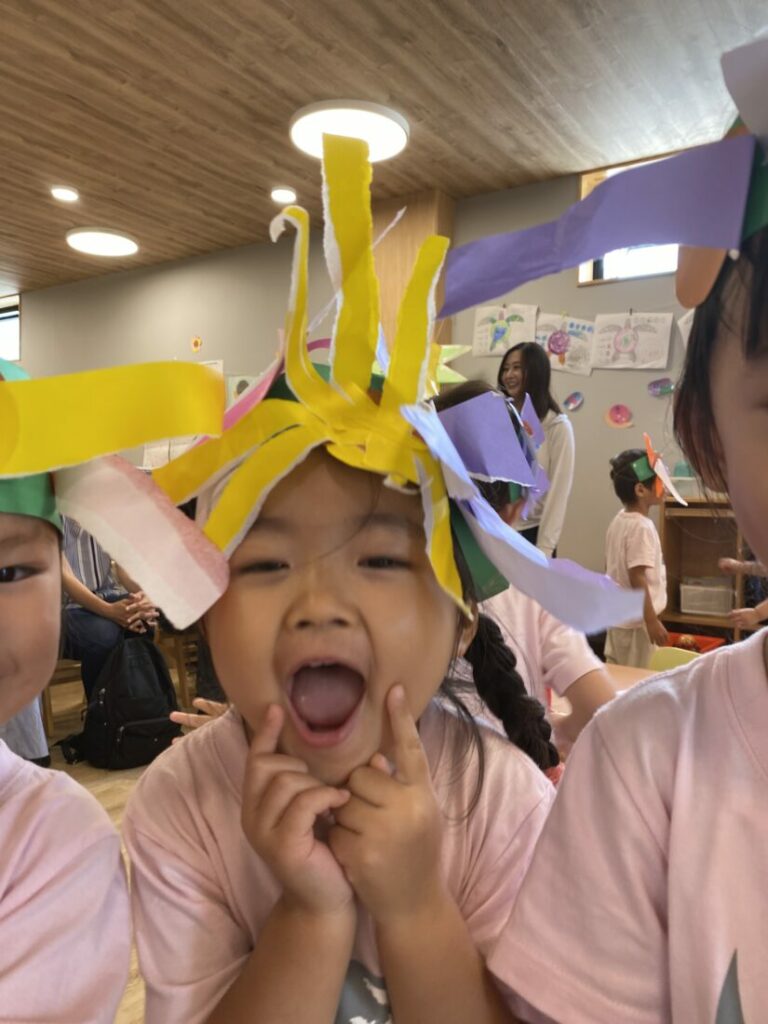
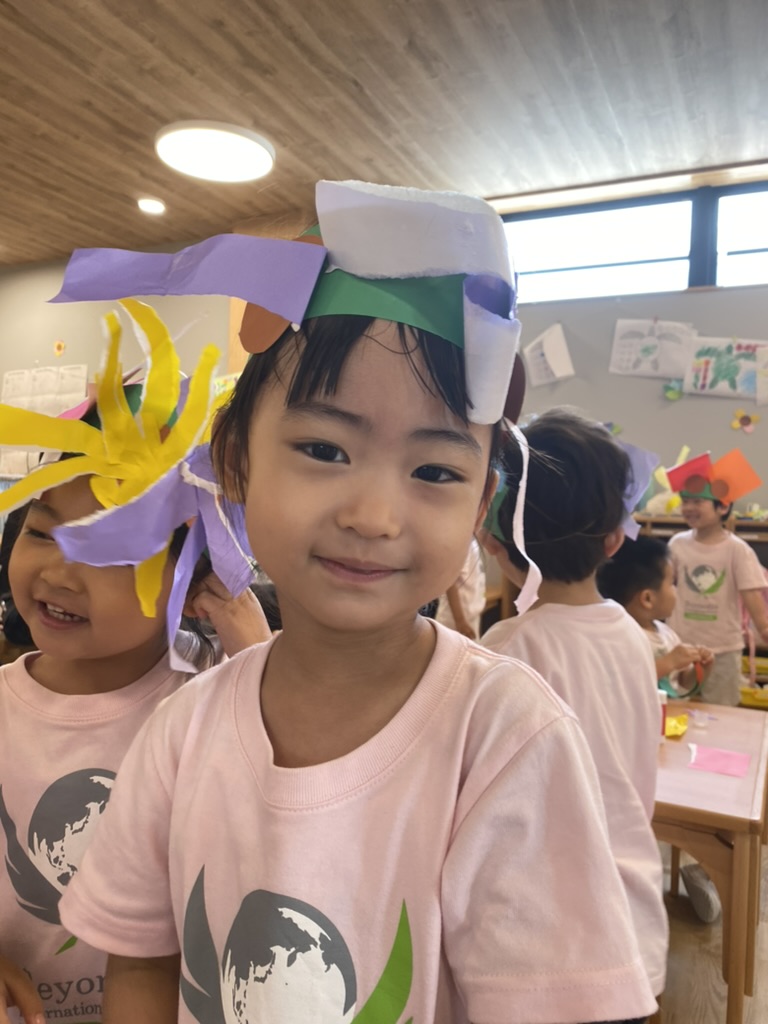
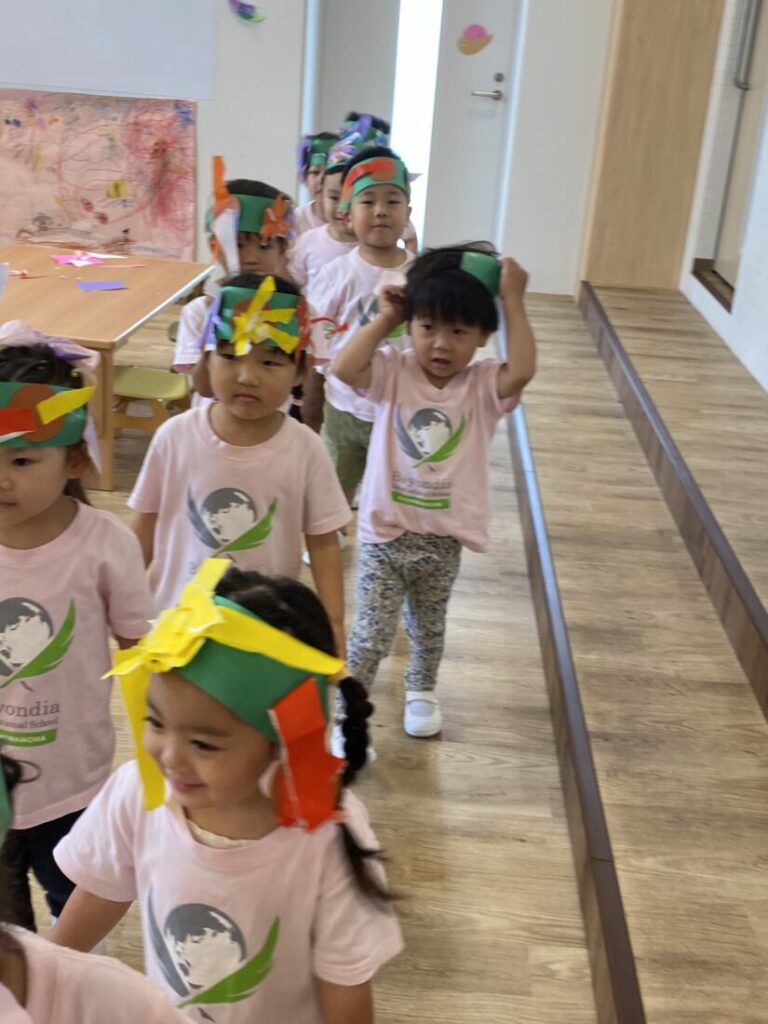
Once everyone had their crowns on, it was time to dance! One of the traditional Midsommar dances in Sweden is Små Grodorna—the Little Frogs dance—performed around the maypole (Midsommarstång)
. The dance features fun movements that highlight parts of the body frogs don’t have, like ears and tails. Parents were also invited to join in, and because the dance is so simple and joyful, it didn’t require much practice. The K1 class and their parents held hands and danced beautifully. It was wonderful to see their smiles and laughter as they hopped to the music.
花の冠をかぶったら、いよいよダンスタイム!
スウェーデンのミッドサマーでよく踊られる伝統的なダンスのひとつが「Små Grodorna(小さなカエル)」です。
このダンスはミッドサマー・ポール(Midsommarstång)のまわりで踊りながら、カエルに“ない”体の部分――たとえば「耳」や「しっぽ」など――を強調したユーモラスな動きをします。
今回は保護者の方々にもご参加いただきました。
このダンスはとてもシンプルで楽しいので、特別な練習は必要ありません。
K1クラスの子どもたちと保護者の皆さまが手をつなぎ、音楽に合わせて楽しく踊る姿はとても素敵でした。
ジャンプしながら笑顔いっぱいに踊る様子は、見ているこちらまで嬉しくなるような光景でした。
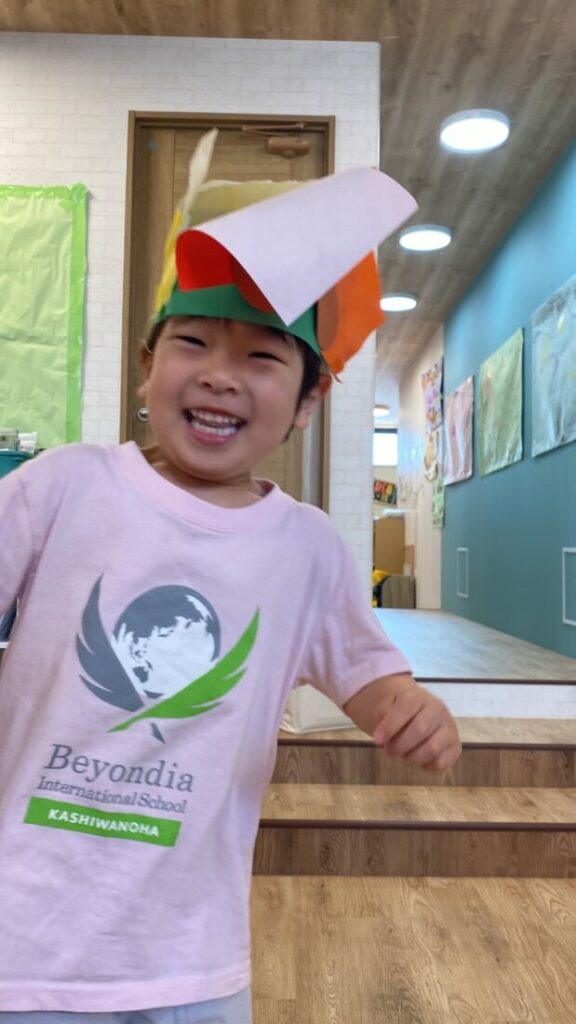
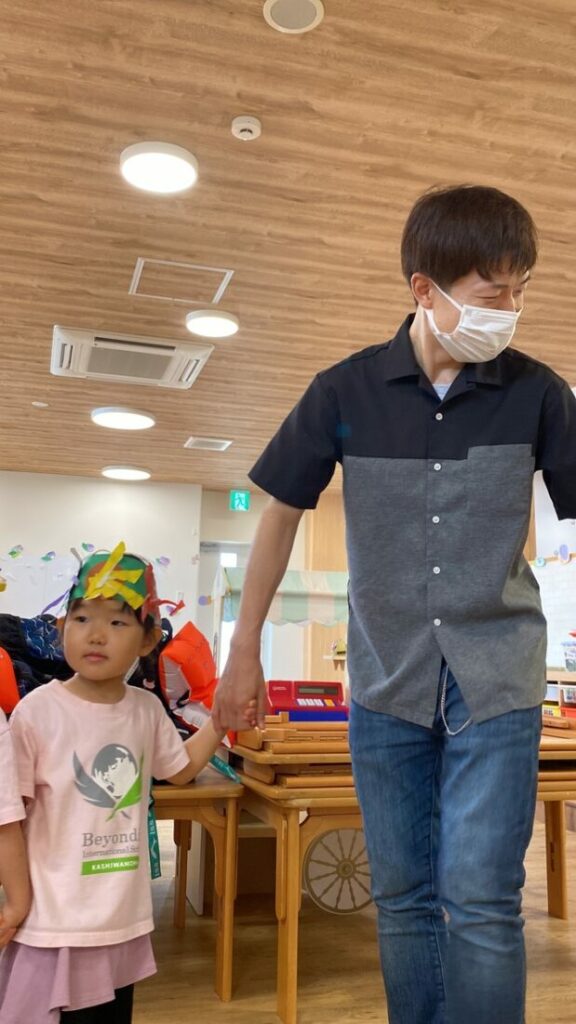
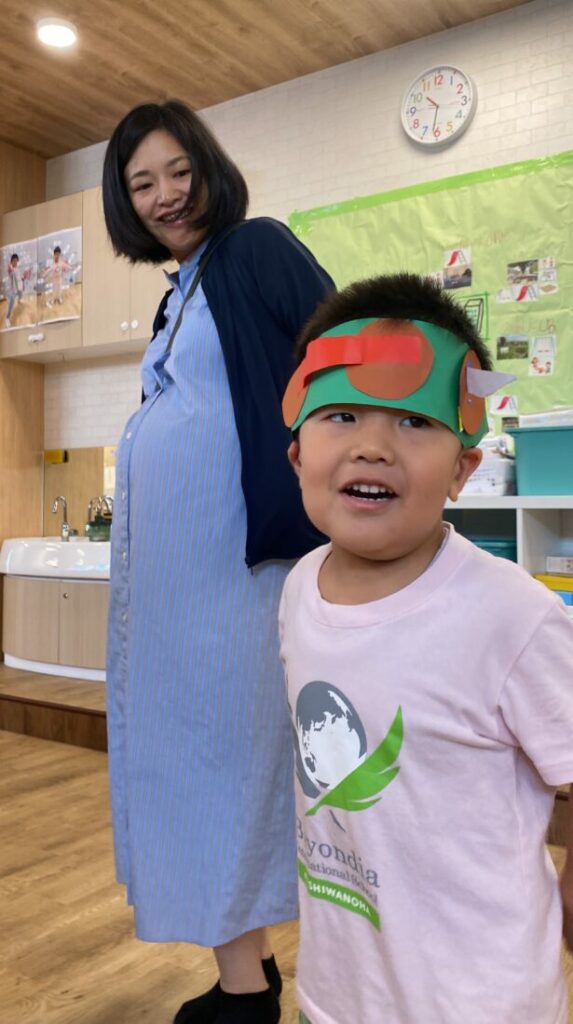
A few days later, the K1 class began learning about Tanabata and the traditional dances connected to the Star Festival. They noticed how similar it felt to Midsommar and decided they wanted to share the Små Grodorna dance with the K2 and K3 classes. We brought out the Midsommarstång again and showed the dance to the older children. After watching it a few times, it was their turn to join in. Even some of the teachers joined the fun! Everyone had a wonderful time dancing like silly frogs and sharing the joy across the classes.
数日後、K1クラスでは七夕について学び始め、星まつりにまつわる伝統的な踊りにもふれました。
すると子どもたちは、「ミッドサマーに似てるね!」と気づき、K2・K3クラスのお友だちにも「Små Grodorna(小さなカエル)」ダンスを紹介したいと話し合いました。
そこで再びミッドサマー・ポール(Midsommarstång)を出して、K2・K3の子どもたちにダンスを披露しました。
何回か見てもらったあと、今度はみんなの番!
先生たちも一緒に参加して、クラスの垣根を越えてカエルのようにぴょんぴょん跳ねながら、にぎやかに楽しみました。
みんなで笑いながら踊る時間は、とても楽しく、あたたかなひとときとなりました。
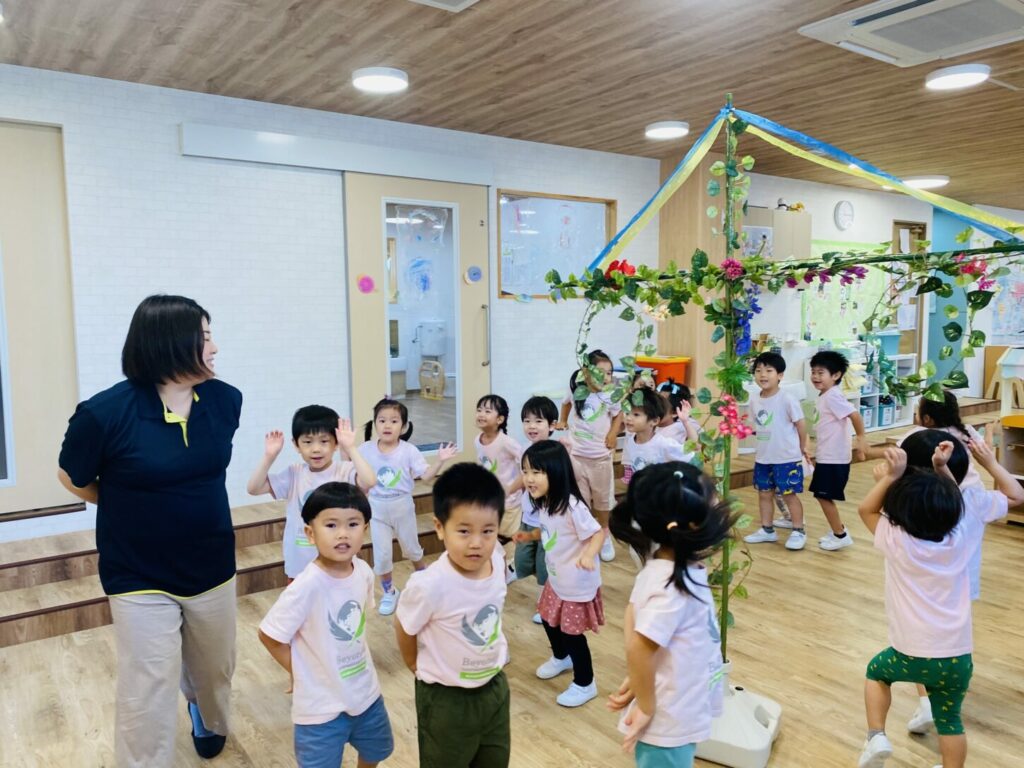
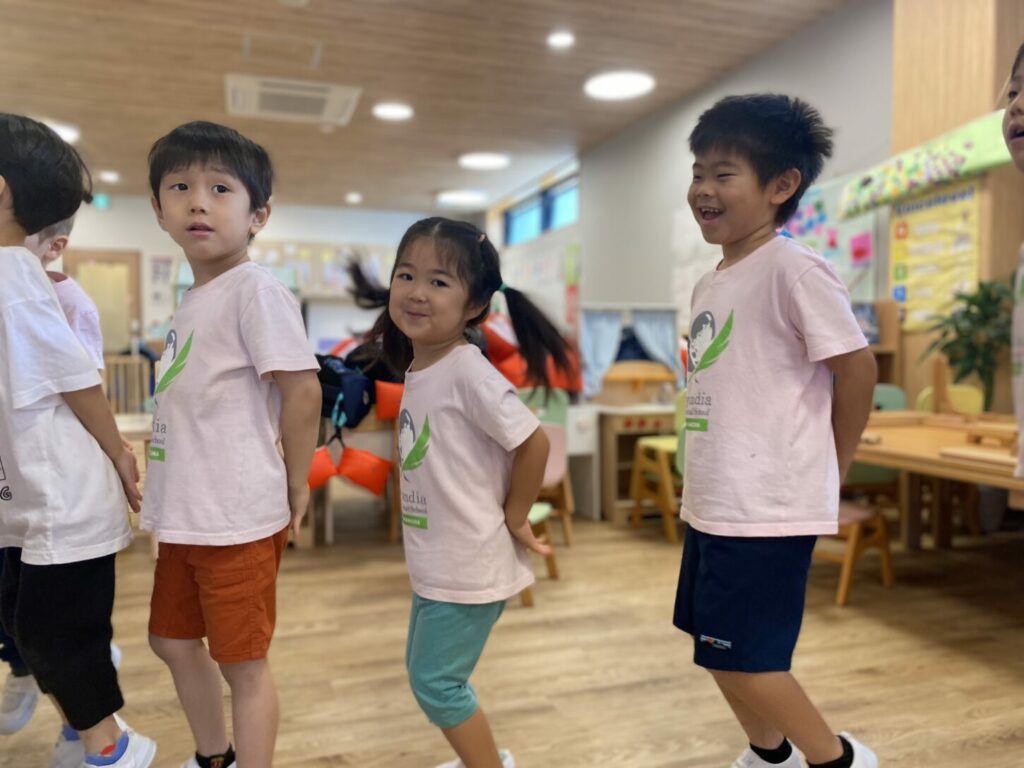
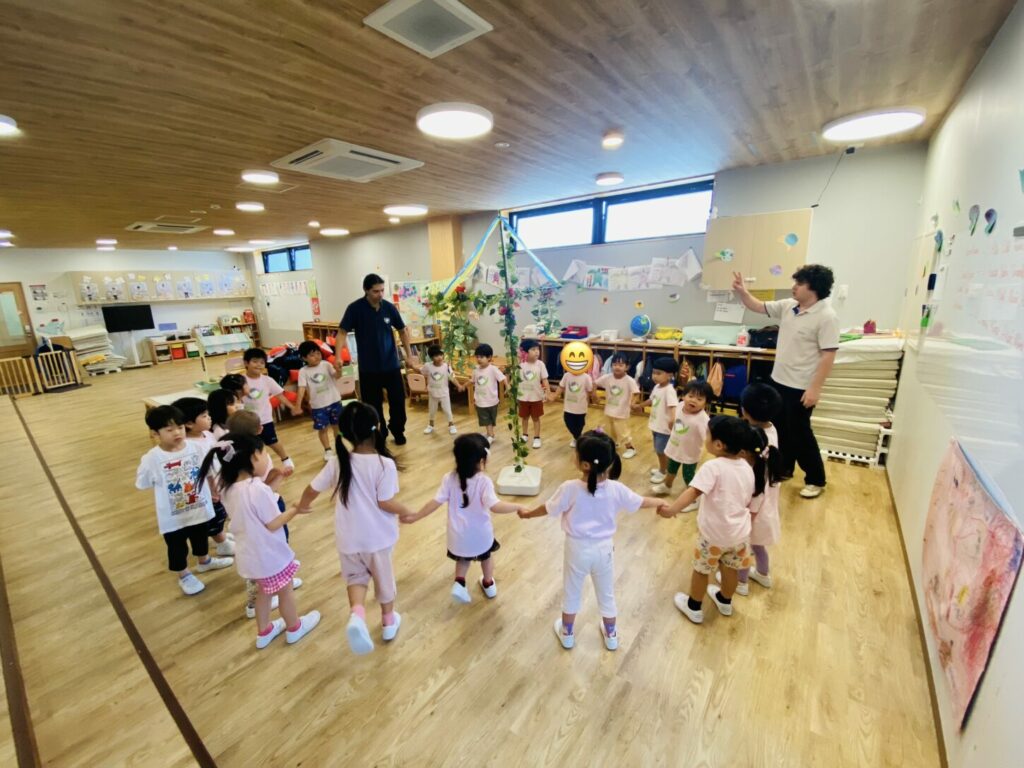
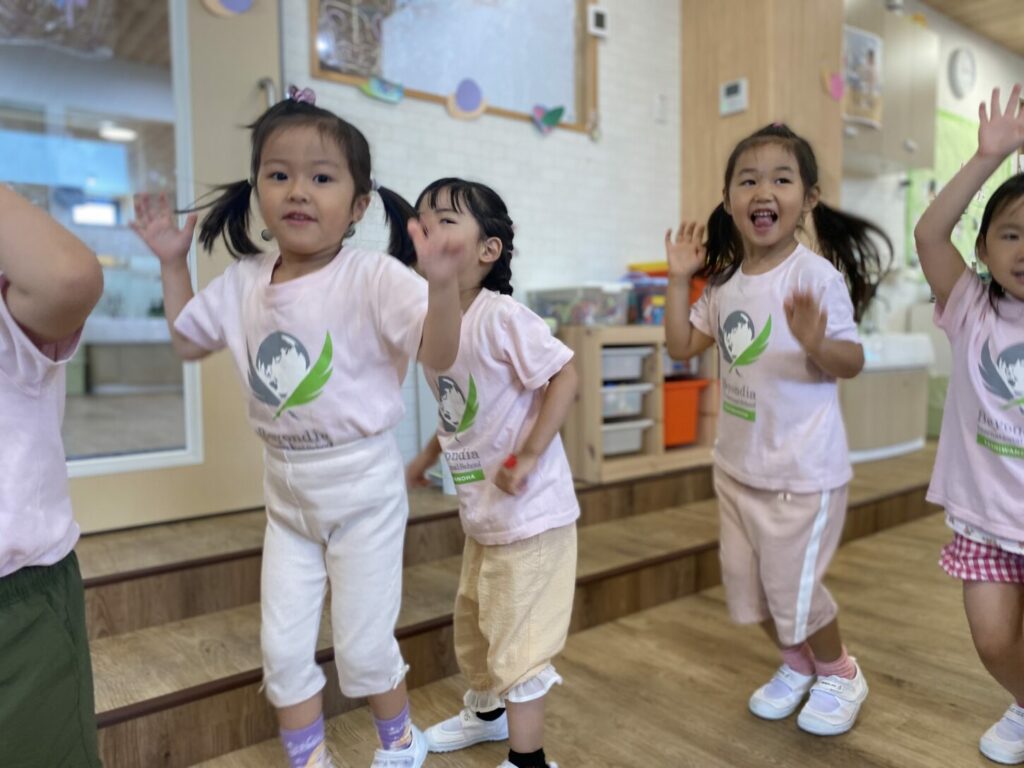
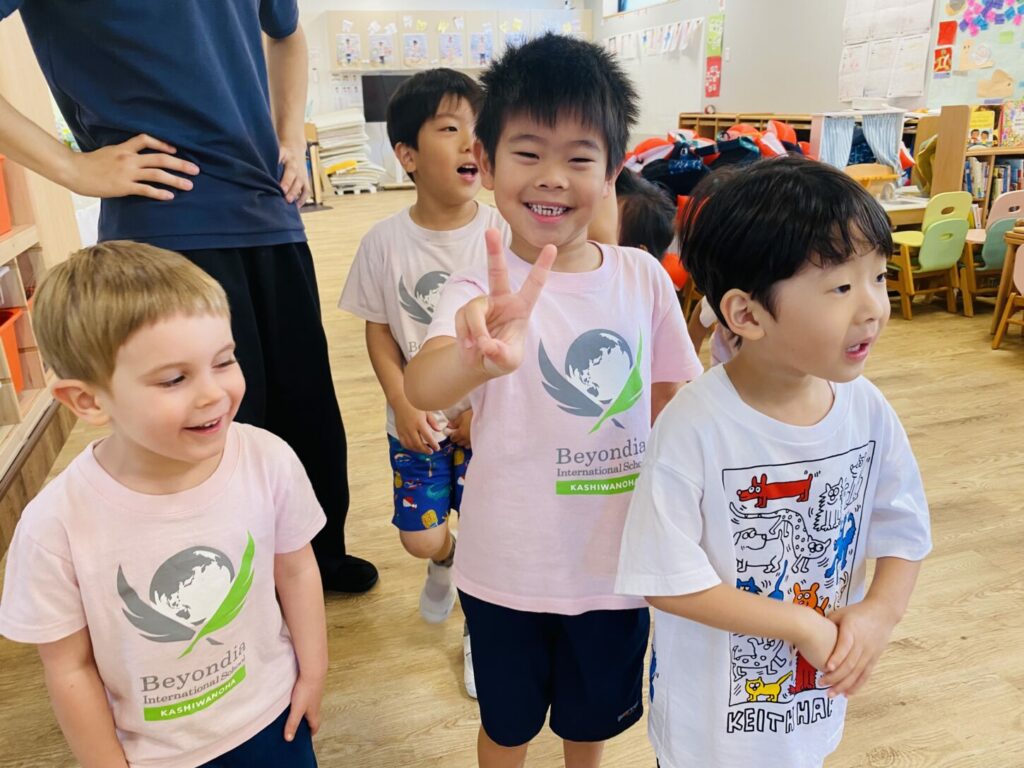
It is always fun to introduce new cultures to the kids here in Beyondia. It helps them to learn about the world around them and better understand their own. We look forward to discovering different festivals and traditions throughout the year.
ビヨンディアでは、子どもたちに新しい文化を紹介するのはいつも楽しい時間です。
世界にはさまざまな国や習慣があることを知ることで、子どもたちは周りの世界を学ぶだけでなく、自分たちの文化への理解も深めていきます。
これからも一年を通して、いろいろなお祭りや伝統にふれていくのが楽しみです。


